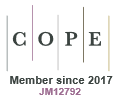The pros and cons of increasing soil organic matter in dryland cropping systems
Chelsea Janke A B * , John Kirkegaard
A B * , John Kirkegaard  C , James Hunt
C , James Hunt  A D , Louise Barton
A D , Louise Barton  E , Lindsay Bell
E , Lindsay Bell  F , Senani Karunaratne
F , Senani Karunaratne  C , Lynne M. Macdonald
C , Lynne M. Macdonald  A , Chiara Pasut
A , Chiara Pasut  A , Uta Stockmann
A , Uta Stockmann  C , Ehsan Tavakkoli G , Gupta Vadakattu A , Anton Wasson C and Mark Farrell
C , Ehsan Tavakkoli G , Gupta Vadakattu A , Anton Wasson C and Mark Farrell  A E *
A E *
A
B
C
D
E
F
G
Abstract
Soil organic matter (SOM) in drylands accounts for approximately 33% of global soil organic carbon (SOC) stocks and regulates many processes. Anthropogenic activities and climatic changes have influenced, and continue to significantly influence SOM contents. However, management practices that improve the soil carbon (C) and macronutrient balance can increase or maintain SOM. These include (1) maximising C inputs from grain crops, (2) integrating livestock and pasture phases, (3) using cover crops, (4) intercropping, (5) managing tillage and stubble, and (6) organic amendments. Estimated SOC increases achievable in drylands, ranging from 60 to 114 kg C ha year−1, fall short of the ambitious ‘4 per mille’ target, which is equivalent to a 0.4% annual increase in initial soil C, or at least 240 kg C ha−1 year−1 for drylands (assuming a global mean dryland SOC stock of 60 Mg C ha−1). In dryland systems, we propose a more rational approach, advocating for context-specific optima with a clear understanding of the benefits and costs to evaluate the suitability of management practices for improving SOM. The benefits include amelioration of soil constraints, improving nutrient and water availability, enhancing system resilience and sustainability, and potential participation in C markets. However, costs can be significant and are typically divided into the following two main categories: (1) economic (e.g. financial costs required for implementing management practices), and (2) environmental (e.g. the potential for increased nutrient loss via emissions or leaching as a result of enhanced nutrient cycling). The net benefit or cost is highly context-dependent, with the unique challenges of dryland environments being often overlooked in the literature. This review examines the primary strategies for maintaining or increasing SOM in dryland arable systems, the associated benefits and costs, methods for monitoring SOC stocks, and future challenges and opportunities.
Keywords: agronomy, carbon management, dry-land, organic carbon, rainfed, resilience, soil carbon sequestration, soil health.


